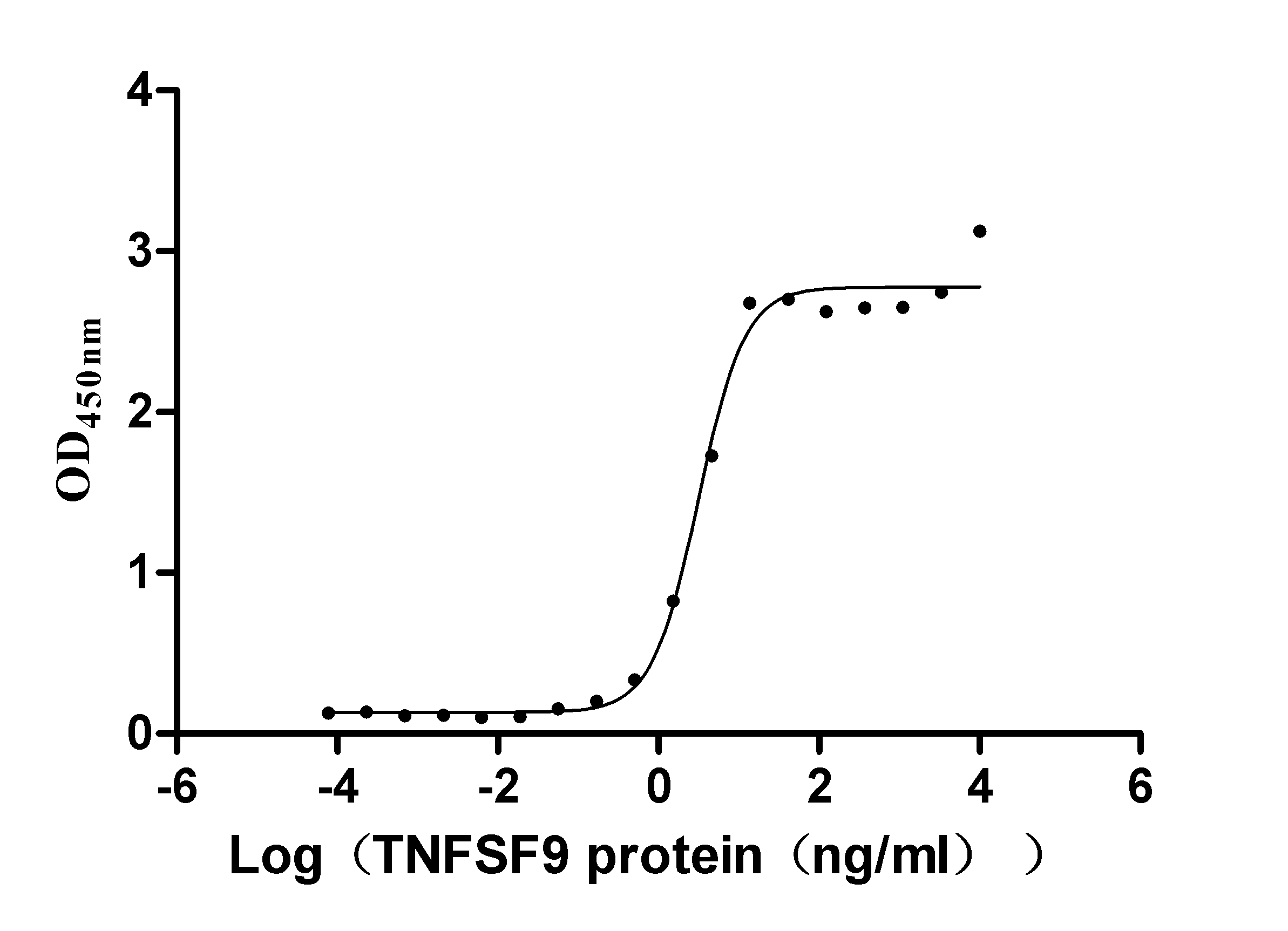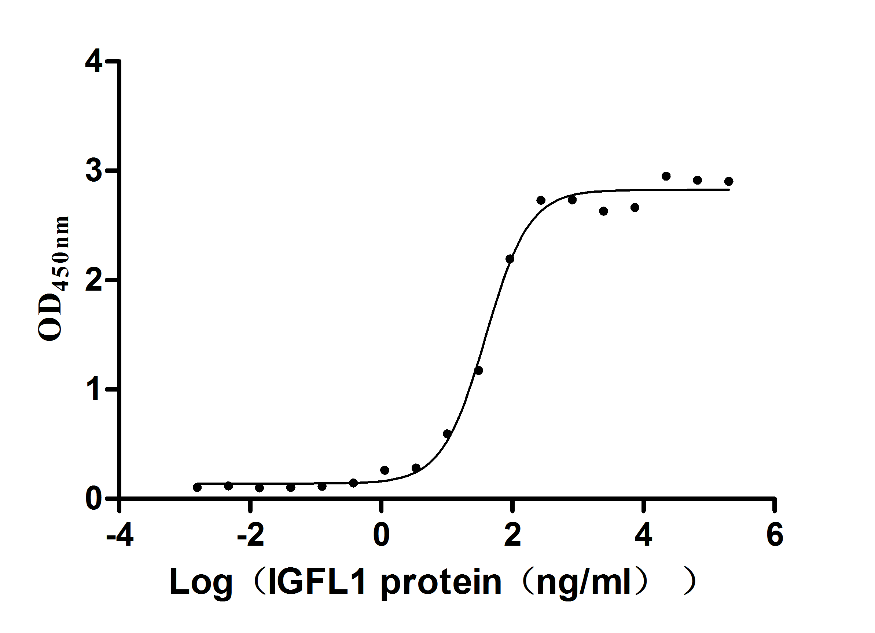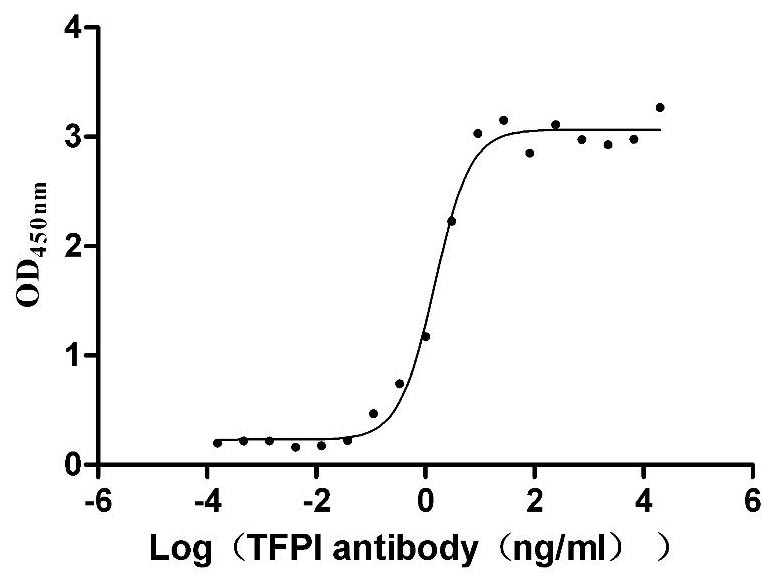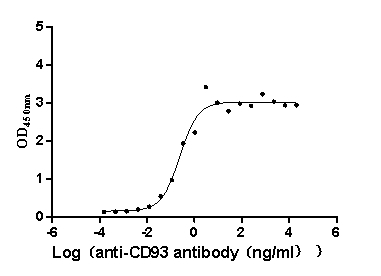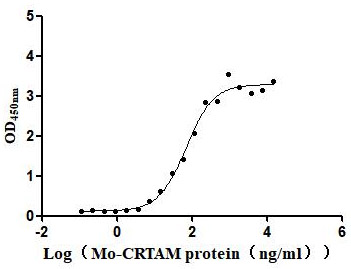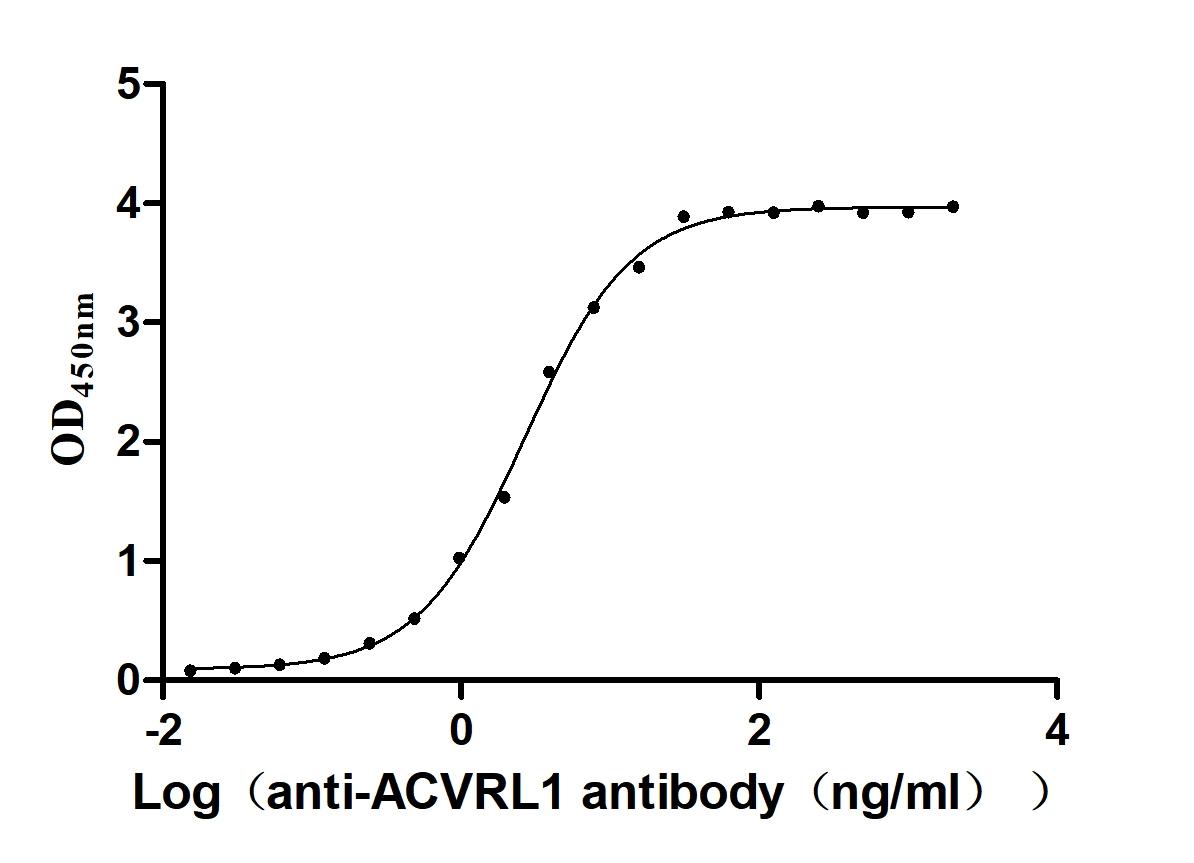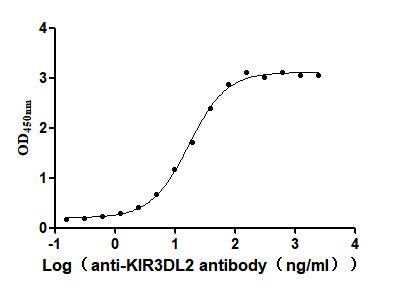Recombinant Human Transcription factor COE1 (EBF1 COE1 EBF)
-
中文名稱:
-
貨號:CSB-YP720505HU
-
規格:
-
來源:Yeast
-
其他:
-
中文名稱:
-
貨號:CSB-EP720505HU
-
規格:
-
來源:E.coli
-
其他:
-
中文名稱:
-
貨號:CSB-EP720505HU-B
-
規格:
-
來源:E.coli
-
共軛:Avi-tag Biotinylated
E. coli biotin ligase (BirA) is highly specific in covalently attaching biotin to the 15 amino acid AviTag peptide. This recombinant protein was biotinylated in vivo by AviTag-BirA technology, which method is BriA catalyzes amide linkage between the biotin and the specific lysine of the AviTag.
-
其他:
-
中文名稱:
-
貨號:CSB-BP720505HU
-
規格:
-
來源:Baculovirus
-
其他:
-
中文名稱:
-
貨號:CSB-MP720505HU
-
規格:
-
來源:Mammalian cell
-
其他:
產品詳情
-
純度:>85% (SDS-PAGE)
-
基因名:COE1
-
Uniprot No.:
-
別名:Transcription factor COE1; O/E-1; OE-1; Early B-cell factor; EBF1 COE1 EBF
-
種屬:Homo sapiens (Human)
-
蛋白標簽:Tag?type?will?be?determined?during?the?manufacturing?process.
The tag type will be determined during production process. If you have specified tag type, please tell us and we will develop the specified tag preferentially. -
產品提供形式:Liquid or Lyophilized powder
Note: We will preferentially ship the format that we have in stock, however, if you have any special requirement for the format, please remark your requirement when placing the order, we will prepare according to your demand. -
復溶:We recommend that this vial be briefly centrifuged prior to opening to bring the contents to the bottom. Please reconstitute protein in deionized sterile water to a concentration of 0.1-1.0 mg/mL.We recommend to add 5-50% of glycerol (final concentration) and aliquot for long-term storage at -20℃/-80℃. Our default final concentration of glycerol is 50%. Customers could use it as reference.
-
儲存條件:Store at -20°C/-80°C upon receipt, aliquoting is necessary for mutiple use. Avoid repeated freeze-thaw cycles.
-
保質期:The shelf life is related to many factors, storage state, buffer ingredients, storage temperature and the stability of the protein itself.
Generally, the shelf life of liquid form is 6 months at -20°C/-80°C. The shelf life of lyophilized form is 12 months at -20°C/-80°C. -
貨期:Delivery time may differ from different purchasing way or location, please kindly consult your local distributors for specific delivery time.Note: All of our proteins are default shipped with normal blue ice packs, if you request to ship with dry ice, please communicate with us in advance and extra fees will be charged.
-
注意事項:Repeated freezing and thawing is not recommended. Store working aliquots at 4°C for up to one week.
-
Datasheet :Please contact us to get it.
靶點詳情
-
功能:Key pioneer transcription factor of B-cell specification and commitment. Recognizes variations of the palindromic sequence 5'-ATTCCCNNGGGAATT-3'. Operates in a transcription factor network to activate B-cell-specific genes and repress genes associated with alternative cell fates. For instance, positively regulates many B-cell specific genes including BCR or CD40 while repressing genes that direct cells into alternative lineages, including GATA3 and TCF7 for the T-cell lineage. In addition to its role during lymphopoiesis, controls the thermogenic gene program in adipocytes during development and in response to environmental cold.; (Microbial infection) Acts as a chromatin anchor for Epstein-Barr virus EBNA2 to mediate the assembly of EBNA2 chromatin complexes in B-cells. In addition, binds to the viral LMP1 proximal promoter and promotes its expression during latency.
-
基因功能參考文獻:
- EBF1 acts as a pioneer transcription factor that operates in a transcription factor network to activate B cell-specific genes and repress genes associated with alternative cell fates. (Review) PMID: 29336845
- EBF1-PDGFRB is sufficient to drive leukemogenesis. PMID: 28555080
- EBF1 modifies the breast cancer subtype-specific methylation and gene expression program. PMID: 29099283
- EBF1 was down-regulated in cholangiocarcinoma (CCA) tissues and cell lines. PMID: 29169115
- Data show that GS Homeobox 2 (Gsx2) and Early B-cell factor 1 (Ebf1) combined overexpression in human embryonic stem (hES) cells achieves high yields of medium spiny neurons (MSNs). PMID: 28137879
- this study demonstrates a role for the AHR in regulating human B cell development, and it suggests that transcriptional alterations of EBF1 by the AHR are involved in the underlying mechanism PMID: 28978690
- In a Chinese population the TT genotype and T alleles in rs36071027 in the EBF1 gene are associated with an increased risk of coronary artery disease and its severity. PMID: 28183271
- A genome-wide significant association was observed for rs35715456 (log10BF = 6.3) on chromosome 18 for the dichotomous trait of having at least one long-lived parent versus not having any long-lived parent. The most significant association among single nucleotide polymorphisms in longevity candidate genes (APOE, MINIPP1, FOXO3, EBF1, CAMKIV, and OTOL1) was observed in the EBF1 gene region (rs17056207, p = .0002). PMID: 27816938
- In this genomewide association study, we found that variants at the EBF1, EEFSEC, AGTR2, WNT4, ADCY5, and RAP2C loci were associated with gestational duration and variants at the EBF1, EEFSEC, and AGTR2 loci with preterm birth. PMID: 28877031
- EBF1 polymorphism is associated with metabolic diseases. PMID: 27918534
- Among 15 childhood ALL patients with EBF1-PDGFRB fusion proteins, the fusion arose from interstitial deletion of 5q33 (n = 11), balanced rearrangement (n = 2), or complex rearrangement (n = 2). PMID: 26872634
- EBF1 is critical for transcriptional control of SLAMF1 gene in human B cells. PMID: 27424222
- The four single-nucleotide polymorphisms that had strong linkage disequilibrium relationships (rs10061900, rs10070743, rs4704967, and rs10056564) demonstrated significant interactions with the waist-hip ratio in the dominant model. PMID: 27744667
- two multi-zinc finger transcription cofactors named ZNF423 and ZNF521 have been characterised as potent inhibitors of EBF1 and are emerging as potentially relevant contributors to the development of B-cell leukaemias PMID: 26788497
- Studied whether EBF1 expression and biological activity in white adipose tissue is related to different metabolic parameters. PMID: 25791133
- role in the expression of Latent membrane protein 1 PMID: 26819314
- early B cell factor-1 (EBF1) was identified as a co-regulator of gene expression with MEF2C. PMID: 26900922
- Epstein-Barr Virus EBNA1 bound to host genes of high significance for B-cell growth and function, including MEF2B, IL6R, and EBF1. PMID: 26468528
- EBF1 plays a role in connecting chronic psychosocial stress and central obesity as a risk factor for CVD. PMID: 25271088
- A novel cross talk between ERbeta and Early B-cell Factor 1 (EBF1) was also identified and characterized. PMID: 23951143
- The transcription factor EBF1 is an interaction partner for TET2, suggesting a sequence-specific mechanism for regulating DNA methylation. PMID: 23863747
- Using a capture sequencing strategy, we discovered the B-cell relevant genes IRF8, EBF1, and TNFSF13 as novel targets for IGH deregulation. PMID: 23775715
- Loss of EBF1 expression is associated with Hodgkin lymphoma. PMID: 23174882
- ectopic expression of EBF1 efficiently induced the development of B-1 cells at the expense of conventional B cells. PMID: 22473956
- EBF1 functions as a tissue-specific regulator of chromatin structure at B cell-specific genes. [Review] PMID: 21735360
- Data show that ZNF521 can antagonize B-cell development and support the notion that it may contribute to conserve the multipotency of primitive lympho-myeloid progenitors by preventing or delaying their EBF1-driven commitment toward the B-cell lineage. PMID: 21593590
- Ebf1 or Pax5 haploinsufficiency synergizes with STAT5 activation to initiate acute lymphoblastic leukemia PMID: 21606506
- EBF1, BLK and TNFSF4 are all involved in B-cell differentiation and activation, and we conclude that polymorphisms in several susceptibility genes in the immune system contribute to the pathogenesis of primary SS. PMID: 20861858
- our studies not only provided molecular basis of ATF5 transcriptional regulation, but also identified ATF5 as a target gene of EBF1 transcription factor. PMID: 20423929
- unique structural features of EBF domains and dimeerization motif PMID: 20592035
- Three independent binding sites for EBF in the surrogate light chain VpreB promoter are important for the full function of the promoter and its collaborative activation by EBF and E47 in a preB cell line. PMID: 11994467
- data suggest that Notch signaling may affect B-versus T-lineage commitment by the targeting of both EBF and E2A PMID: 15920012
- EBF-1 and PPARgamma2 induce adipocyte differentiation with comparable kinetics and efficiency. PMID: 16106032
- Two genetic markers within the EBF1 gene have been found associated with multiple sclerosis, indicative either of their causative role or that of some other polymorphism in linkage disequilibrium with them. PMID: 16255771
- The regulation of Ebf1 via distinct promoters allows for the generation of several feedback loops and the coordination of multiple determinants of B lymphopoiesis in a regulatory network. PMID: 17101802
顯示更多
收起更多
-
亞細胞定位:Nucleus.
-
蛋白家族:COE family
-
數據庫鏈接:
Most popular with customers
-
Recombinant Human Tumor necrosis factor ligand superfamily member 9 (TNFSF9), partial (Active)
Express system: Mammalian cell
Species: Homo sapiens (Human)
-
Recombinant Human IGF-like family receptor 1 (IGFLR1), partial (Active)
Express system: Mammalian cell
Species: Homo sapiens (Human)
-
Recombinant Human Tissue factor pathway inhibitor (TFPI), partial (Active)
Express system: Mammalian cell
Species: Homo sapiens (Human)
-
Recombinant Rat Intestinal-type alkaline phosphatase 1 (Alpi) (Active)
Express system: Mammalian cell
Species: Rattus norvegicus (Rat)
-
Recombinant Macaca fascicularis CD93 molecule (CD93), partial (Active)
Express system: Mammalian cell
Species: Macaca fascicularis (Crab-eating macaque) (Cynomolgus monkey)
-
Recombinant Mouse Cell adhesion molecule 1 (Cadm1), partial (Active)
Express system: Mammalian cell
Species: Mus musculus (Mouse)
-
Recombinant Human Serine/threonine-protein kinase receptor R3 (ACVRL1), partial (Active)
Express system: Baculovirus
Species: Homo sapiens (Human)
-
Recombinant Human Killer cell immunoglobulin-like receptor 3DL2 (KIR3DL2), partial (Active)
Express system: Mammalian cell
Species: Homo sapiens (Human)


